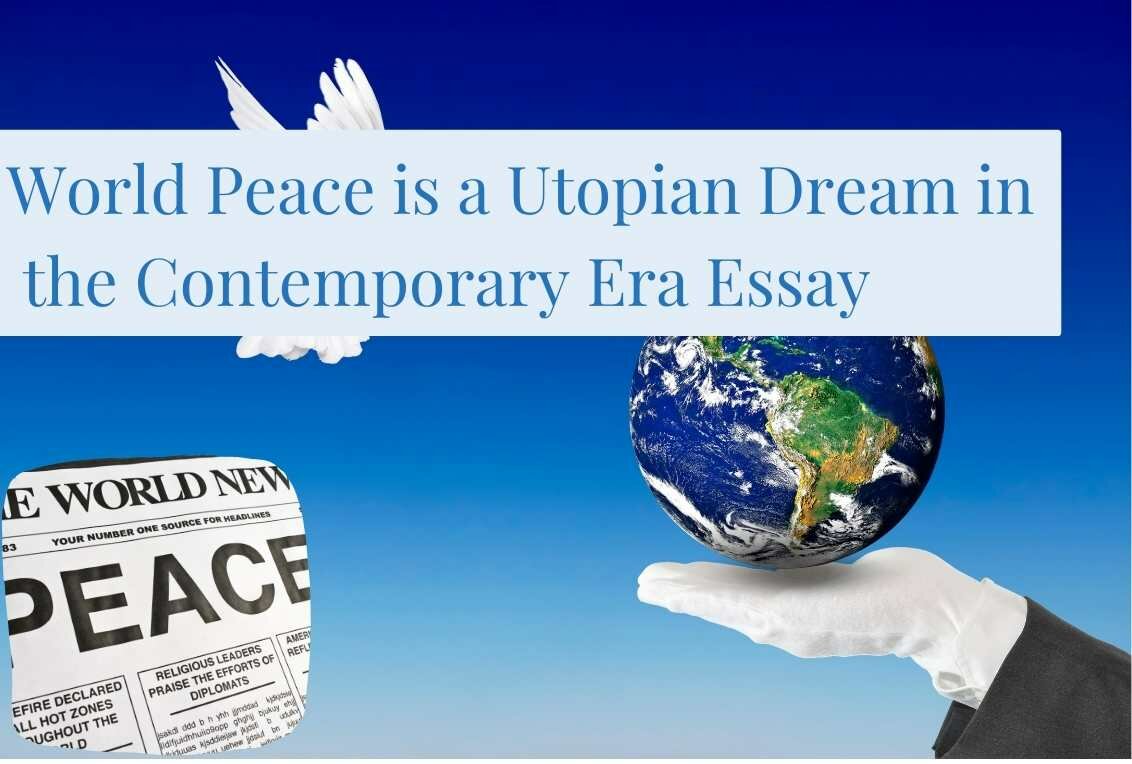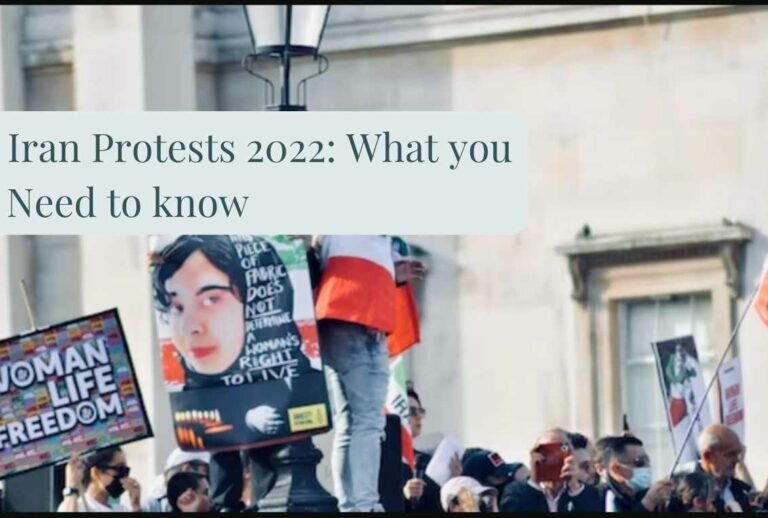World Peace is a Utopian Dream in the Contemporary Era Essay
I. Introduction
World peace is a state in which there is no war or violence. All nations and people coexist in harmony. It is the absence of conflict, both on a global and regional scale, and the presence of stability, justice, and prosperity for all. World peace also includes the protection of human rights and the promotion of equality and mutual understanding among nations. It is often seen as an ideal state. Many people and organizations work towards promoting and achieving it.
Besides, a utopian society is a hypothetical or imagined community or society that possesses highly desirable or nearly perfect qualities. The term is often used to describe a society that is free from poverty, war, oppression, and other social ills. Utopian societies are typically characterized by a high level of equality, cooperation, and happiness among their inhabitants. The concept of a utopian society has a long history. It is dating back to ancient times, with literary and philosophical works like Plato’s “Republic” and Thomas More’s “Utopia“. They are some of the earliest examples.
The current state of the world is complex and multifaceted, and there are many challenges to achieving peace. Some of the most significant challenges include political instability and conflicts, economic inequality, ethnic and religious tension, the arms race and the threat of war, and many more.
Also Read: Global Warming Myth or Reality Essay

II. Historical Attempts at Achieving World Peace
Historically, there have been many attempts to achieve world peace. Some of the most notable attempts include:
- The League of Nations: The League of Nations was created after World War I. It was an international organization that aimed to prevent future wars by promoting cooperation and diplomacy between nations.
- The United Nations: The UN was established after World War II. It is an international organization with the goal of maintaining international peace and security. It is also promoting human rights and providing humanitarian aid.
- Treaties and International agreements: Many treaties and international agreements have been signed throughout history in an attempt to prevent war and promote peace. For example, the Paris Peace Accords were signed in 1973 to end the Vietnam War. Moreover, the Camp David Accords of 1978 between Israel and Egypt was signed to bring peace.
- Diplomacy and negotiation: Throughout history, diplomats and negotiators have worked to prevent conflicts by negotiating treaties and agreements, mediating disputes, and promoting dialogue between nations.
- Peacekeeping and peacebuilding operations: The United Nations and other organizations have often deployed peacekeeping forces and engaged in peacebuilding activities in conflict-affected countries in an attempt to promote peace and stability.
Also Read: Importance of Free Speech Essay
III. Contemporary challenges to world peace
There are many contemporary challenges to world peace that continue to impede progress toward a more peaceful world. Some of these challenges include:
1. Political and Economic Inequality
In many parts of the world, political and economic power is concentrated in the hands of a small elite. Political and economic inequality refers to the unequal distribution of political and economic power and resources within a society or between different societies. This type of inequality can lead to a number of challenges to world peace. Some of these challenges include social unrest, political instability, economic disparities, and lack of representation.
2. Ethnic and Religious Conflicts
Ethnic and religious tensions continue to be a major source of conflict in many parts of the world, with ongoing struggles between different groups over land, resources, and political power.
3. The Arms race and the Threat of war
Many countries continue to invest heavily in military capabilities, raising the risk of war and the potential for accidental conflicts.
4. Cyber warfare and the Emergence of New Technologies
As cyber-attacks become more prevalent and the use of technologies such as drones and artificial intelligence in warfare increases, the risk of cyber warfare and unintended conflict becomes higher.
5. Climate Change and its Impact on Global Conflicts
Climate change is expected to cause more natural disasters and displacement which could lead to conflicts over resources and territory.
6. Terrorism
The rise of terrorism, particularly from extremist groups, has led to increased violence and instability in many parts of the world, making it difficult to achieve peace.
7. Immigration and Refugee Crisis
The current refugee crisis and the subsequent rise of nationalist sentiments in some countries are threatening world peace and stability.
These are just a few examples of the many challenges to world peace that continue to affect the world today.
Also Read: Earthquake Safety Information by Japan
IV. Possible solutions
There are several possible solutions to the challenges of achieving world peace, including:
- Education and awareness-raising: Education and awareness-raising can help to promote understanding and tolerance between different groups and cultures, which can help to reduce tensions and conflicts.
- International cooperation and multilateralism: International cooperation and multilateralism can help to address global challenges such as poverty, climate change, and terrorism through collective action.
- Conflict resolution and peacebuilding: Conflict resolution and peacebuilding can help to prevent and resolve conflicts, and promote stability and reconciliation between conflicting parties.
- Economic development and poverty reduction: Economic development and poverty reduction can help to address the root causes of conflicts, such as economic inequality and lack of access to basic needs, and create the conditions for sustainable peace.
- Human Rights protections: protecting and promoting human rights, through international treaties and laws, can help reduce conflicts by ensuring that all individuals are treated with dignity and equality.
- Diplomacy and negotiations: Diplomacy and negotiations can help to resolve disputes peacefully, and prevent conflicts from escalating.
- Address the underlying issues of migration and refugee crisis: Addressing the underlying issues such as poverty, political instability, and climate change, that force people to flee their homes could help to reduce the number of refugees and migrants and ease the tensions caused by the crisis.
It is important to note that peacebuilding is a complex and long-term process, and a comprehensive and holistic approach that addresses multiple aspects and causes of conflicts is needed.
Also Read: Tourism in Pakistan: Opportunities & Contribution to Economy
V. Conclusion
In conclusion, world peace is an ideal state that has been sought after throughout history, but has yet to be fully achieved. The current state of the world is complex and multifaceted, and there are many challenges to achieving peace, including political and economic inequality, ethnic and religious conflicts, the arms race, and the threat of war, climate change, and terrorism.
Historically, there have been many attempts to achieve world peace, such as the League of Nations, the United Nations, treaties and international agreements, diplomacy and negotiation, and peacekeeping and peacebuilding operations, but despite these efforts, conflicts continue to occur.
However, there are possible solutions that can help to address these challenges, such as education and awareness-raising, international cooperation and multilateralism, conflict resolution and peacebuilding, economic development and poverty reduction, human rights protections, and diplomacy and negotiations.
It is important to note that peacebuilding is a continuous process that requires a comprehensive and holistic approach, addressing multiple aspects and causes of conflicts. Achieving world peace will require the collective effort of individuals, governments, and international organizations. It’s a challenging goal but one worth striving for, as it will create a better future for all.







